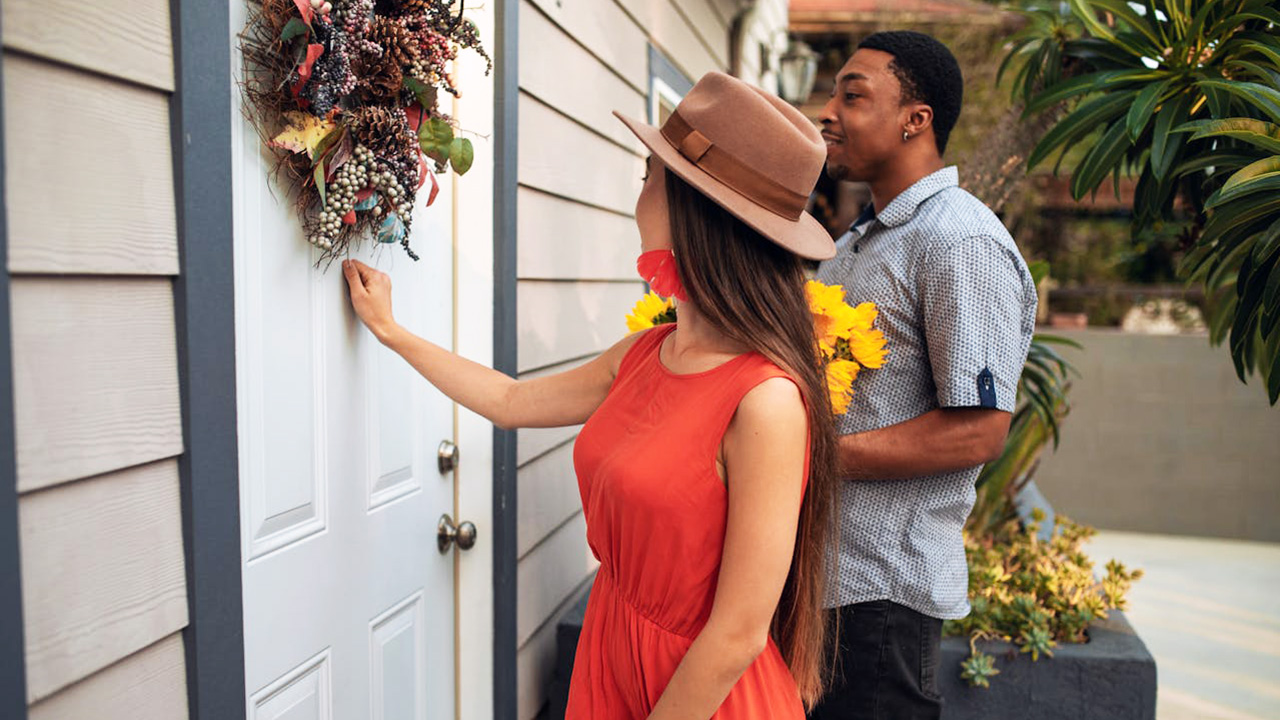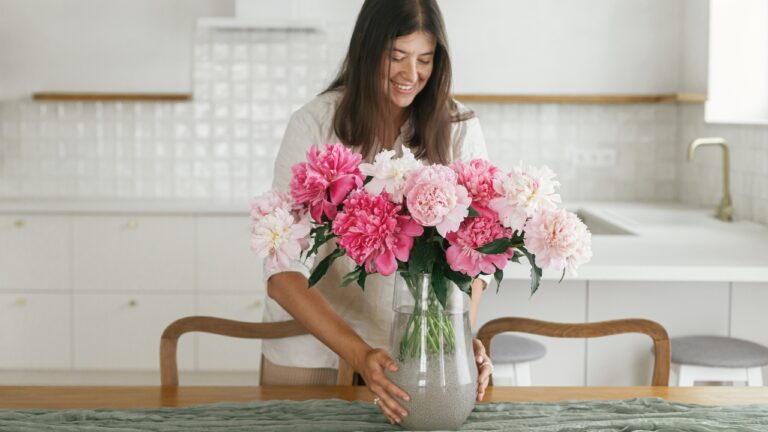You focused on big upgrades—but overlooked the thing guests see first
You finally replaced the countertops with that slab of quartz you pinned a hundred times, and the new shower tile runs all the way to the ceiling without a single grout line out of place. The house feels upgraded from the inside out.
Then the doorbell rings. Your friend stands on the porch waiting while you fish for keys, and all she sees is a front door with peeling paint, a rusty kickplate, and a mail slot that rattles in the breeze. That single detail erases half the impact before anyone steps across the threshold.
Guests decide how much they like your house in the first five seconds. Make those seconds count by treating the entry like the cover of the book.
Replace the doorbell with something solid
The cheap plastic button that sticks halfway in and emits a weak buzz belongs on a rental unit, not the home you just poured money into. Swap it for a wired brass or oil-rubbed bronze model that produces a clear, confident chime. Hardwiring beats battery versions that die right when the pizza arrives. Mount the new button at forty-eight inches high—standard elbow height—so no one has to hunt for it.
Fill the old screw holes with wood filler, sand smooth, and touch up the paint. The entire job takes fifteen minutes and costs less than a take-out order.
Upgrade the house numbers
Stick-on numerals that curl at the edges and fade to gray disappear against the siding by dusk. Cast metal numbers at least four inches tall stand out from the curb whether the sun is up or the porch light is on. Pick a typeface that echoes your home’s architecture—clean sans-serif for mid-century, subtle serif for craftsman.
Mount the numbers on a stained backer board for instant contrast. A single low-voltage spotlight aimed downward guarantees they read clearly after dark.
Paint the door in a deep saturated color
Builder-beige doors vanish into the façade and scream “nothing special here.” A front door in navy, hunter green, or charcoal demands attention the moment someone pulls into the driveway. Use exterior-grade paint with a satin finish that forgives fingerprints better than high gloss.
Tape off the hinges, knob, and glass inserts carefully. Two coats applied with a dense foam roller leave a factory-smooth surface. Pull the tape while the paint is still wet for razor-sharp edges.
Swap the knob and lockset

The hollow brass knobset that came with the house green-stains your palm and wobbles with every turn. A grade-2 entry set in matte black or satin nickel weighs twice as much and clicks shut with authority. Spend the extra thirty dollars on a matching deadbolt; grade-3 locks bend under a solid kick.
Have the locksmith rekey both cylinders to the same key while you wait. One key for the knob and deadbolt simplifies life and feels like a custom touch.
Add a storm door that disappears
A full-view glass storm door protects the painted door from rain and wind without hiding the color you just chose. Low-E glass cuts heat loss in winter and glare in summer. Match the storm-door frame exactly to the trim color so it reads as one unit.
Install a pneumatic closer at the top and adjust the tension screw until the door closes gently in seven seconds—no slamming, no finger pinches.
Hang a wreath that lasts
Fake flowers bleach in UV light within a month. A preserved boxwood or eucalyptus wreath keeps its color for a full year with zero upkeep. Loop a wide linen ribbon over the door instead of a metal hook that scratches fresh paint.
Mist the wreath lightly once a month to maintain suppleness. Flat-pack it in a closet when the season changes.
Light the path evenly
One blinding floodlight over the door creates harsh shadows and makes visitors squint. Low-voltage LED path lights spaced six feet apart along the walkway produce a soft, continuous glow. Choose 2700K bulbs that match indoor lighting.
Bury the cable an inch under mulch and connect to a timer that clicks on at dusk. The setup costs less than a single service call.
Power-wash the stoop and siding

Green algae on vinyl and black mildew on concrete age the entry faster than any faded paint. Rent a 2000-psi electric washer and use the 25-degree tip. Start at the top of the siding and work downward in slow, overlapping passes.
Rinse the stoop last so runoff doesn’t streak the clean façade. The transformation appears while the surface is still wet.
Install a boot scraper
Street mud that makes it past the mat grinds into hardwood the moment shoes cross the threshold. A cast-iron boot scraper bolted to the stoop removes chunks before they ever touch the rug. Position it within the first step so compliance is automatic.
Brush it clean weekly and oil the bolts once a year to prevent rust stains on the concrete.
Add a slim console inside
The foyer either welcomes or overwhelms. A narrow console floated on the wall at thirty inches high holds keys, mail, and one lamp without eating floor space. Choose a piece no deeper than ten inches to keep the path clear.
Limit the top to a ceramic lamp, a shallow bowl, and a single stack of books. The restraint signals intentional design.
You swing the door open now. The saturated color hits first, followed by the solid click of the lockset. Path lights guide every step, and the foyer console glows warm. Your guests are already impressed before they glimpse the quartz counters. The entry just became the strongest room in the house.
Like Fix It Homestead’s content? Be sure to follow us.
Here’s more from us:
8 upgrades that look like you spent thousands (but didn’t)
9 small changes that instantly make a house feel high-end
*This article was developed with AI-powered tools and has been carefully reviewed by our editors.







